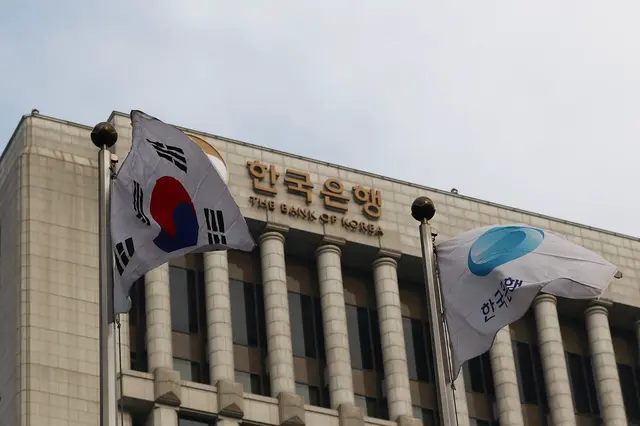South Korea's central bank on Thursday revised down its 2016 growth forecast to 2.7 percent, the third downward revision in 2016 alone, as concerns mounted over the ongoing restructuring process in troubled shipbuilders and shipping lines that is expected to hit the economy in the second half.
The Bank of Korea (BOK)'s growth outlook for 2016 was cut to 2. 7 percent from 2.8 percent estimated three months earlier. The BOK' s outlook was first revised down from 3.2 percent to 3.0 percent in January, before falling further to 2.8 percent in April.
The downward revisions came despite a more expansionary monetary policy and fiscal stimulus measures. The central bank cut the benchmark interest rate by 25 basis points to an all-time low of 1.25 percent in June.
The government set aside about 10 trillion won (8.8 billion U.S. dollars) in extra budget for the second half of this year on growing worries that the government-led restructuring in the shipbuilding and shipping industries would put additional pressure on the already struggling economy.
Under the self-restructuring plan, South Korea's top three shipbuilders, including Hyundai Heavy Industries, Samsung Heavy Industries and Daewoo Shipbuilding & Marine Engineering, plan to reduce overcapacity by 20 percent and cut workforce by 30 percent by the end of 2018.
The jobless rate kept rising in the country's southeastern coastal region where main shipyards are located, and massive layoffs are expected to come from shipbuilders as well as their subcontractors and partner companies. The unemployment rate in South Gyeongsang province rose 1.0 percentage point to 3.9 percent in June, posting the highest increase among provinces.
The country's gross domestic product (GDP) growth picked up from 2.3 percent in 2012 to 2.9 percent in 2013 and 3.3 percent in 2014 each, but it turned downward to 2.6 percent in 2015.
The downturn came as exports, which account for about half of the export-driven economy, maintained the longest monthly fall amid global economic slump, while domestic production and consumption remained lackluster.
The decision between Seoul and Washington to deploy the Terminal High Altitude Area Defense (THAAD) in South Korean soil by the end of next year boosted concerns about domestic companies, which depend heavily on Chinese consumers and tourists for revenue.
If the THAAD deployment decision worsens China-South Korea relations, especially economic ties, about 23,000 South Korean companies operating in China are expected to be hit hardest by the strained ties.
The BOK's growth forecast of 2.7 percent is lower than the government's outlook of 2.8 percent. Economic think tanks announced lower outlooks than the BOK's forecast, with 2.6 percent estimated by the state-run Korea Development Institute (KDI) and the Korea Institute of Finance (KIF).
LG Economic Research Institute and Hyundai Research Institute predicted a 2.5 percent growth in 2016, while the Korea Economic Research Institute expected a 2.3 percent expansion.
BOK Governor Lee Ju-yeol told a press conference after the rate freeze decision that growth potential of South Korea's economy may turn downward in consideration of low birth rate and aging population, calling for efforts to increase productivity and efficiency of the economy. The BOK's growth potential is estimated at 3.0-3.2 percent between 2015 and 2018.
Regarding negative effects from the THAAD deployment, Lee said the impact of non-economic factors on the economy cannot be ruled out, expressing his concern about the deployment.
Meanwhile, the BOK's outlook for this year's consumer price inflation was estimated at 1.1 percent, down from 1.2 percent forecast three months ago.
The headline inflation was 0.9 percent in the first half, much lower than the central bank's inflation target of 2.0 percent. The inflation is forecast to post 1.3 percent for the second half, before rising above 2 percent in the first half of next year.
Low headline inflation came mainly from cheaper crude oil, which pulled down the country's consumer price inflation by 0.8 percentage points during the January-June period.
(APD)
 简体中文
简体中文












